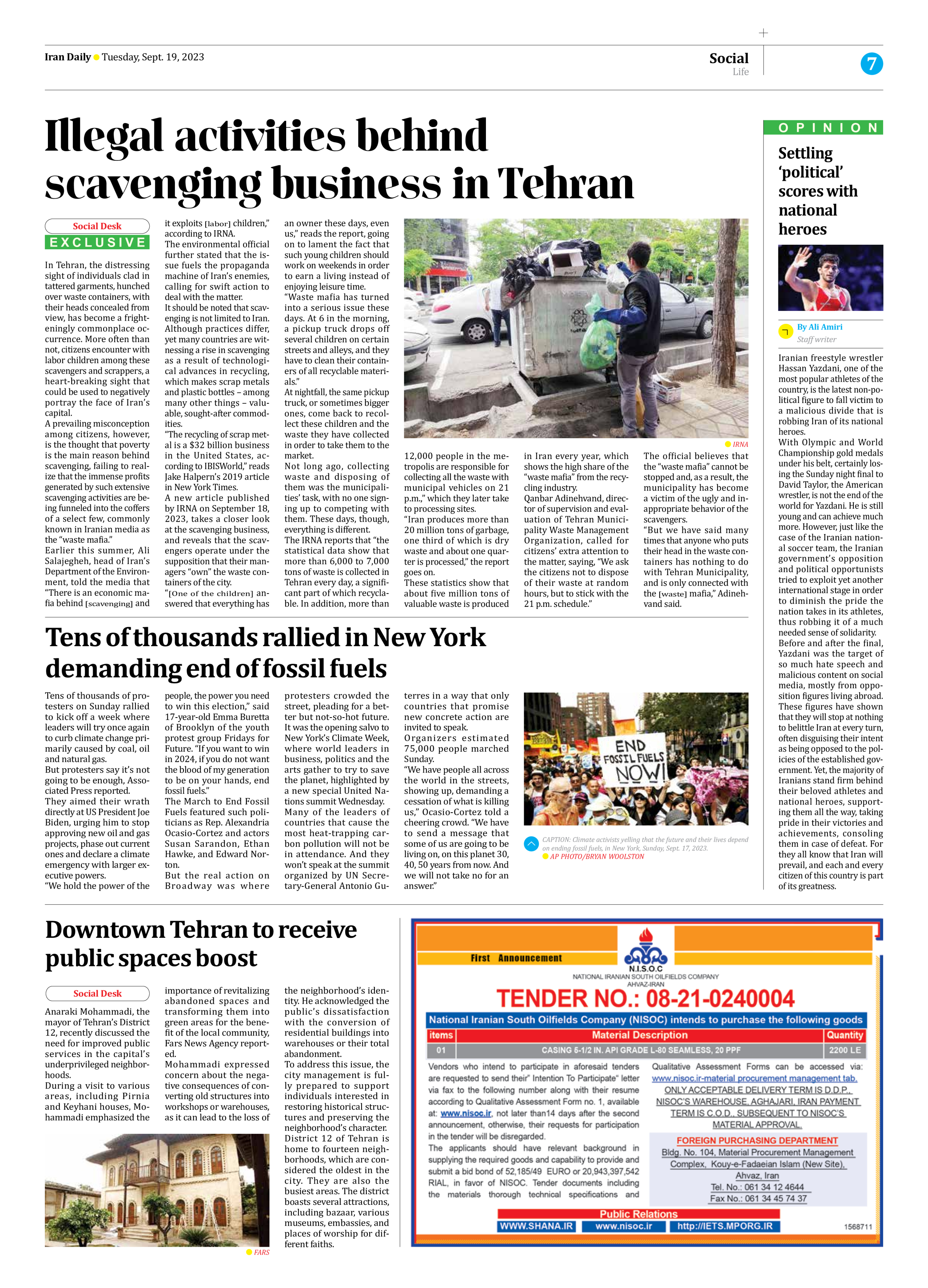
Illegal activities behind scavenging business in Tehran
In Tehran, the distressing sight of individuals clad in tattered garments, hunched over waste containers, with their heads concealed from view, has become a frighteningly commonplace occurrence. More often than not, citizens encounter with labor children among these scavengers and scrappers, a heart-breaking sight that could be used to negatively portray the face of Iran’s capital.
A prevailing misconception among citizens, however, is the thought that poverty is the main reason behind scavenging, failing to realize that the immense profits generated by such extensive scavenging activities are being funneled into the coffers of a select few, commonly known in Iranian media as the “waste mafia.”
Earlier this summer, Ali Salajegheh, head of Iran’s Department of the Environment, told the media that “There is an economic mafia behind [scavenging] and it exploits [labor] children,” according to IRNA.
The environmental official further stated that the issue fuels the propaganda machine of Iran’s enemies, calling for swift action to deal with the matter.
It should be noted that scavenging is not limited to Iran. Although practices differ, yet many countries are witnessing a rise in scavenging as a result of technological advances in recycling, which makes scrap metals and plastic bottles – among many other things – valuable, sought-after commodities.
“The recycling of scrap metal is a $32 billion business in the United States, according to IBISWorld,” reads Jake Halpern’s 2019 article in New York Times.
A new article published by IRNA on September 18, 2023, takes a closer look at the scavenging business, and reveals that the scavengers operate under the supposition that their managers “own” the waste containers of the city.
“[One of the children] answered that everything has an owner these days, even us,” reads the report, going on to lament the fact that such young children should work on weekends in order to earn a living instead of enjoying leisure time.
“Waste mafia has turned into a serious issue these days. At 6 in the morning, a pickup truck drops off several children on certain streets and alleys, and they have to clean their containers of all recyclable materials.”
At nightfall, the same pickup truck, or sometimes bigger ones, come back to recollect these children and the waste they have collected in order to take them to the market.
Not long ago, collecting waste and disposing of them was the municipalities’ task, with no one signing up to competing with them. These days, though, everything is different.
The IRNA reports that “the statistical data show that more than 6,000 to 7,000 tons of waste is collected in Tehran every day, a significant part of which recyclable. In addition, more than 12,000 people in the metropolis are responsible for collecting all the waste with municipal vehicles on 21 p.m.,” which they later take to processing sites.
“Iran produces more than 20 million tons of garbage, one third of which is dry waste and about one quarter is processed,” the report goes on.
These statistics show that about five million tons of valuable waste is produced in Iran every year, which shows the high share of the “waste mafia” from the recycling industry.
Qanbar Adinehvand, director of supervision and evaluation of Tehran Municipality Waste Management Organization, called for citizens’ extra attention to the matter, saying, “We ask the citizens not to dispose of their waste at random hours, but to stick with the 21 p.m. schedule.”
The official believes that the “waste mafia” cannot be stopped and, as a result, the municipality has become a victim of the ugly and inappropriate behavior of the scavengers.
“But we have said many times that anyone who puts their head in the waste containers has nothing to do with Tehran Municipality, and is only connected with the [waste] mafia,” Adinehvand said.







